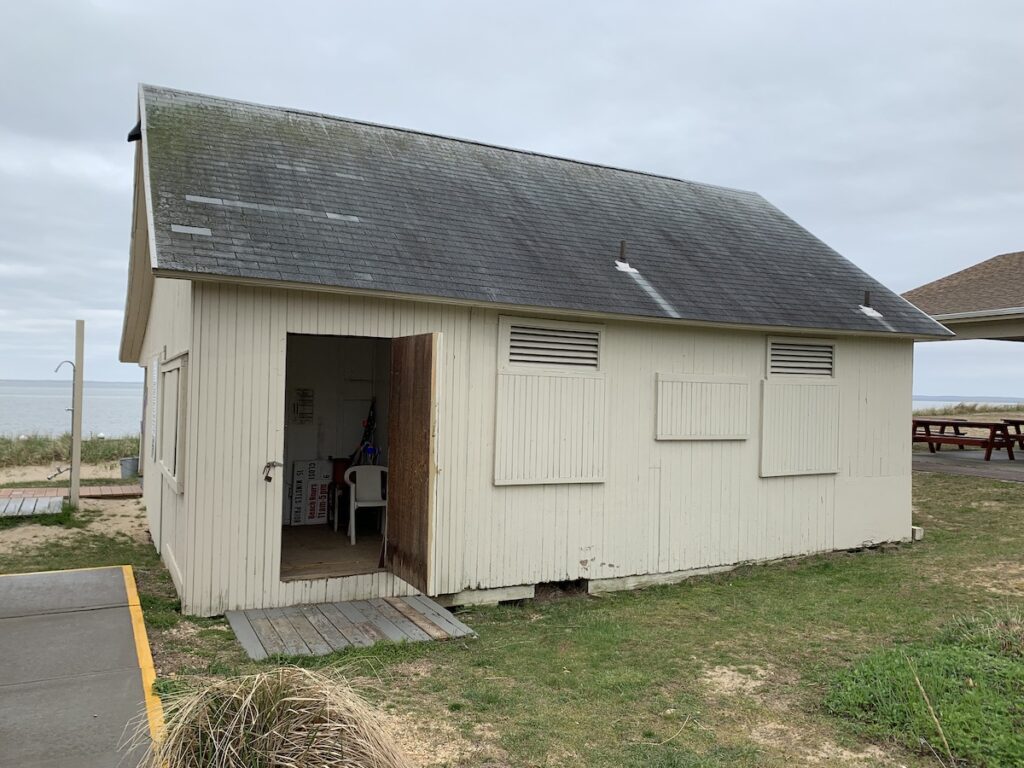Corps to air inlet dredging plan

KATHARINE SCHROEDER PHOTO
Jim and Cindy Kaminsky aboard their fishing boat the Tide II. They say every trip through Mattituck Inlet is a struggle and the boat frequently runs aground, although it only draws six feet of water.
It’s been just six years since the Army Corps of Engineers last dredged Mattituck Inlet, which opens into Long Island Sound. But the heavily trafficked channel is already so clogged with sand that operators of large boats find it impassable at low tide.
The Army Corps is planning the inlet’s most extensive dredging ever for the winter of 2011 undera provision known as Section 111 of the 1968 federal River and Harbor Act, which requires the Corps to mitigate shoreline damage caused by its navigation projects.
The Corps is responsible for maintaining the navigable channel between two jetties installed at the mouth of the inlet in 1906. The jetties have caused the beach to the west to widen, while the beach to the east has been narrowed and starved for sand.
The new plan calls for dredging the seven-foot-deep channel to 11 feet and creating a wider channel than in the past. The Corps also plans to move 10,000 cubic yards of sand from the west side of the jetty, where it piles up with some eventually making its way back into the inlet, to the east side.
The project will cost about $3.2 million, and funding requires initial approval from Congress before it is approved by the Corps.
The Corps of Engineers will hold a public meeting on its draft dredging proposal on Monday, Aug. 23, at Mattituck-Laurel Library. Corps representatives will hold informal discussions with residents between 3 and 5 p.m. and will give a presentation on the project at 5:30 p.m.
“We’re open to anyone’s concerns, pro or con,” said Army Corps project planner Thomas Pfeifer, who will be on hand to answer questions next Monday. “When moving sand to the eroded side, there are always folks on the receding side who are grateful to have the sand and folks on the opposite side who express concerns.”
The Native American name Mattituck means “great creek,” and Mattituck Inlet is central to the hamlet’s marine businesses.
Two restaurants and two marinas count on the water access it provides, a party fishing boat runs out of the inlet and a boat based there shuttles workers to the ConocoPhillips oil terminal in Northville every morning. In addition, the New York State Department of Environmental Conservation recently purchased a 13-acre boatyard near the entrance to the inlet that it plans to use for public access to the water.
Cindy and Jim Kaminsky, who own Long Island Sound Seafood on the inlet’s east side, say they’ve been suffering because of the inlet shoaling all year. The Kaminskys’ fishing boat Tide II, which they take out every morning, has run aground on a regular basis.
“Eventually a boat is going to run into some severe trouble and won’t be able to get back in,” said Ms. Kaminsky. “We have to time our approach in or out before or after low tide. We’ve hit bottom, rolled the boat, and sat there for an hour or more. It can be really bad if the weather picks up.”
Mr. Kaminsky said there were two bad shoaling points, one just inside the inlet entrance and another more than 300 feet outside the jetties.
“Every year it’s a little worse,” he said. “They don’t do a very good job when they do dig it out. Within one year, it closes in again.”
Ron and Doris McGreevy, who live on the east side of the inlet, have been pushing for more extensive dredging for several years. In addition to the need for a clear navigation channel, they say the new dredging plan will address the erosion of nesting grounds for piping plover and terns on Bailie Beach, a Mattituck Park District beach that has been scoured deeply by the jetties’ disruption of the natural flow of sand.
“It’s like dominoes,” said Ms. McGreevy. “We have a situation where there’s too much sand in one place and not enough sand where there should be … We don’t want anything more than the way it was if Mother Nature was to have the sand flow in an easterly direction.”
Ms. McGreevy added that the Sound had already broken through the narrow strip of land to the east of the jetties in 1935, creating a pool of water gushing into the inlet that was not closed until after the end of World War II.
“If they don’t do something, Long Island Sound will create its own inlet. There will be a breach,” she said. The dredging plan, she said, “is important for the vibrant economy and for the health of the natural flora and fauna. It’s the right thing to do.”








